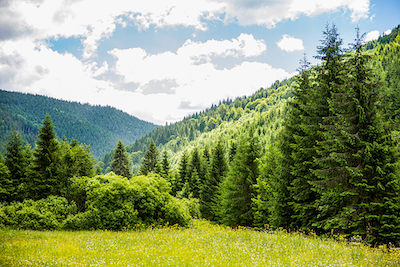When you look outside your window, do you ever notice how some trees stay green all year round while others shed their leaves in the fall? This isn’t just a random occurrence; it’s a distinction between two major types of trees: evergreen and deciduous. In this article, we’re going to dive into the world of these trees, exploring their differences, similarities, and the unique characteristics that make each of them special in their own way.
What Are Evergreen Trees?
Evergreen trees are the marathon runners of the plant world; they keep their leaves/needles throughout the seasons. No matter if it’s a scorching summer or a chilly winter, these trees stay green and vibrant. This group includes pines, spruces, firs, and cedars. Evergreens can be found all over the world, from the cold regions near the poles to the warm tropics. The secret behind their year-round greenery lies in their leaves, which are usually needle-like or scaly, helping them conserve water and survive in various climates.
Advantages of Evergreen Trees
- Consistent Cover: Evergreens provide continuous shade and windbreaks, which can be beneficial for reducing heating costs in the winter.
- Year-Round Beauty: They keep landscapes looking alive and green throughout the year, offering a scenic beauty that doesn’t fade with the seasons.
- Wildlife Haven: Evergreens offer a year-round habitat and food source for various wildlife, from birds to small mammals.
What Are Deciduous Trees?
On the other hand, deciduous trees are the seasonal performers of the plant kingdom. They flaunt their leaves in the spring and summer, and as the cooler weather sets in, they turn brilliant shades of red, yellow, and orange before letting their leaves fall to the ground. This group includes trees like oaks, maples, and birches. Deciduous trees are mostly found in temperate zones of the world where there is a clear distinction between the four seasons. The shedding of their leaves is a survival strategy to conserve water and energy during the cold, dry winter months.
Advantages of Deciduous Trees
- Seasonal Beauty: Deciduous trees provide a visual spectacle, changing colors with the seasons and marking the passage of time.
- Natural Mulch: The fallen leaves create a natural mulch that enriches the soil with nutrients as they decompose.
- Sunlight in Winter: By shedding their leaves, these trees allow sunlight to penetrate through, warming up the surroundings during the colder months.
The Differences Between Evergreen and Deciduous Trees
The most apparent difference between these two types of trees is their foliage cycle. Evergreens keep their leaves all year, while deciduous trees shed theirs annually. This difference is not just for show; it reflects how these trees adapt to their environments and manage resources like water and sunlight.
Leaf Structure
Evergreen leaves are designed to withstand various environmental conditions. They have a waxy coating that reduces water loss, making them ideal for areas prone to drought. Deciduous leaves, with their broad surfaces, are better suited for capturing sunlight but are more vulnerable to water loss, which is why shedding them during dry or cold seasons is beneficial.
Growth and Maintenance
Evergreens tend to grow slower than deciduous trees but require less maintenance since they don’t shed leaves that need to be cleaned up. However, deciduous trees can grow quickly, providing faster shade and landscape changes. Their leaf shedding requires additional cleanup but also contributes to the soil’s health.
Climate Adaptation
Evergreens are often found in both cold and warm climates, from snowy forests to tropical regions. Their ability to retain leaves allows them to photosynthesize and grow throughout the year. Deciduous trees are more common in temperate zones, where their life cycle is synced with the seasonal weather patterns, allowing them to conserve energy and water during less hospitable times of the year.
Similarities Between Evergreen and Deciduous Trees
Despite their differences, evergreen and deciduous trees share several key characteristics. Both play crucial roles in their ecosystems, providing oxygen, improving air quality, and offering habitats for wildlife. They also prevent soil erosion and contribute to the water cycle. Moreover, both types of trees are valuable to humans, supplying timber, fruits, and medicinal ingredients, besides their aesthetic appeal in landscaping and parks.
Conclusion
Whether evergreen or deciduous, trees are vital components of the Earth’s ecosystem. Their unique adaptations allow them to thrive in various climates and conditions, offering endless benefits to the environment and to us. Understanding these differences and similarities helps us appreciate the complexity and beauty of the natural world around us. So, the next time you’re out for a walk, take a moment to observe the trees around you and consider the remarkable strategies they employ to ensure their survival and growth year-round.










